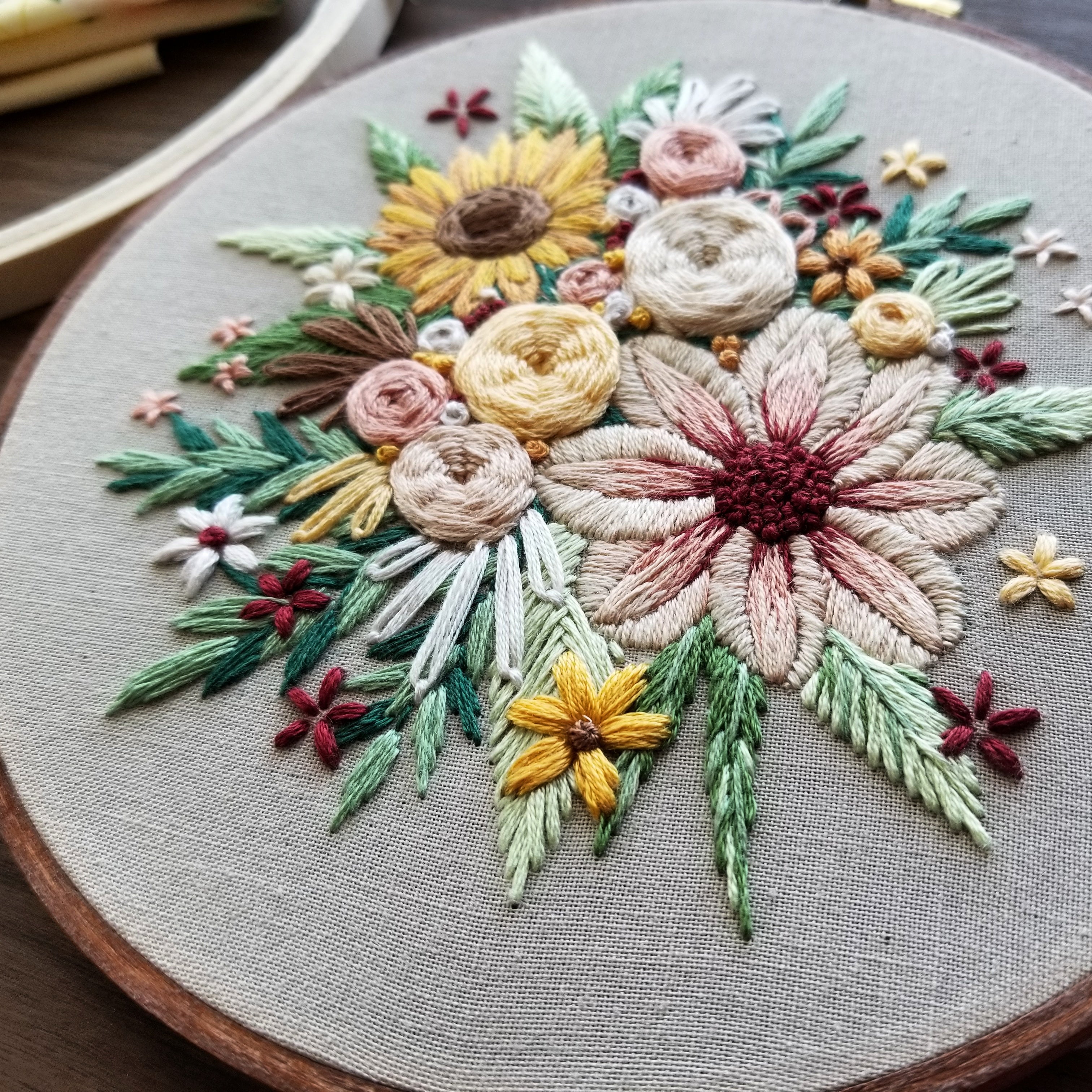The Blooming World of Embroidery: Flower Designs
Embroidery, the art of embellishing fabric with needle and thread, has a rich and vibrant history. Throughout cultures and across centuries, flowers have consistently served as a beloved motif, their beauty and symbolism lending themselves perfectly to this intricate craft. From delicate daisies to opulent orchids, floral embroidery offers a diverse range of styles and techniques, allowing artisans to capture the essence of nature’s artistry on fabric. This article explores the captivating world of flower embroidery designs, delving into their history, various styles, techniques, and the enduring appeal they hold.
A Brief History of Floral Embroidery
The use of flowers in embroidery dates back millennia. Evidence of early embroidery, featuring floral patterns, has been found in ancient civilizations across the globe, including Egypt, China, and Persia. These early examples often utilized natural dyes derived from plants themselves, further emphasizing the connection between the craft and the natural world. During the Middle Ages, embroidery flourished in Europe, adorning ecclesiastical garments and household linens with intricate floral designs. The Renaissance period saw a surge in the popularity of botanical illustrations, which in turn influenced embroidery patterns, leading to more realistic and detailed depictions of flowers. Throughout the centuries, floral embroidery has continued to evolve, reflecting changing artistic tastes and technological advancements, yet its fundamental connection to nature and beauty remains constant.

Exploring Diverse Styles of Floral Embroidery
The world of floral embroidery is a tapestry of diverse styles, each with its own unique characteristics and aesthetic. Here are just a few examples:
Traditional Embroidery Styles
Crewel Embroidery: This style, known for its use of wool yarn and bold, stylized floral designs, often features flowing lines and rich textures. Crewel work was particularly popular in the 17th and 18th centuries and is often used to decorate upholstery and curtains.
Contemporary Embroidery Styles
Freestyle Embroidery: This versatile style allows for a more free-flowing and painterly approach to floral design. Stitches are used to create texture, depth, and shading, giving the embroidery a more organic and expressive feel.

Essential Techniques for Floral Embroidery
Embarking on a floral embroidery project can be both rewarding and challenging. Here are some fundamental techniques to master:
Stitches for Floral Motifs
Satin Stitch: This smooth, solid stitch is perfect for filling in petals and leaves, creating a smooth and even surface.
Transferring Designs and Choosing Materials
Transferring Patterns: Various methods can be used to transfer floral designs onto fabric, including tracing, using iron-on transfers, or printing directly onto fabric.

The Enduring Appeal of Floral Embroidery
The enduring popularity of floral embroidery stems from several factors. Firstly, flowers are universally recognized and appreciated for their beauty. Their vibrant colors, delicate forms, and symbolic meanings make them a natural choice for artistic expression. Secondly, floral embroidery offers a connection to nature, bringing the beauty of the outdoors into our homes and lives. The act of creating floral embroidery can be a meditative and therapeutic process, allowing us to connect with the natural world on a deeper level. Finally, floral embroidery is a versatile art form that can be adapted to suit a wide range of styles and preferences. Whether you prefer the intricate detail of traditional embroidery or the bold simplicity of modern designs, there is a floral embroidery style to capture your imagination.
From simple daisies to elaborate bouquets, floral embroidery continues to captivate and inspire. Its timeless beauty, diverse techniques, and enduring connection to nature ensure that this art form will continue to flourish for generations to come. Whether you are a seasoned embroiderer or just beginning your journey, exploring the world of floral embroidery is a rewarding and enriching experience, allowing you to create beautiful and lasting works of art that celebrate the beauty of the natural world.
embroidery designs in flowers
